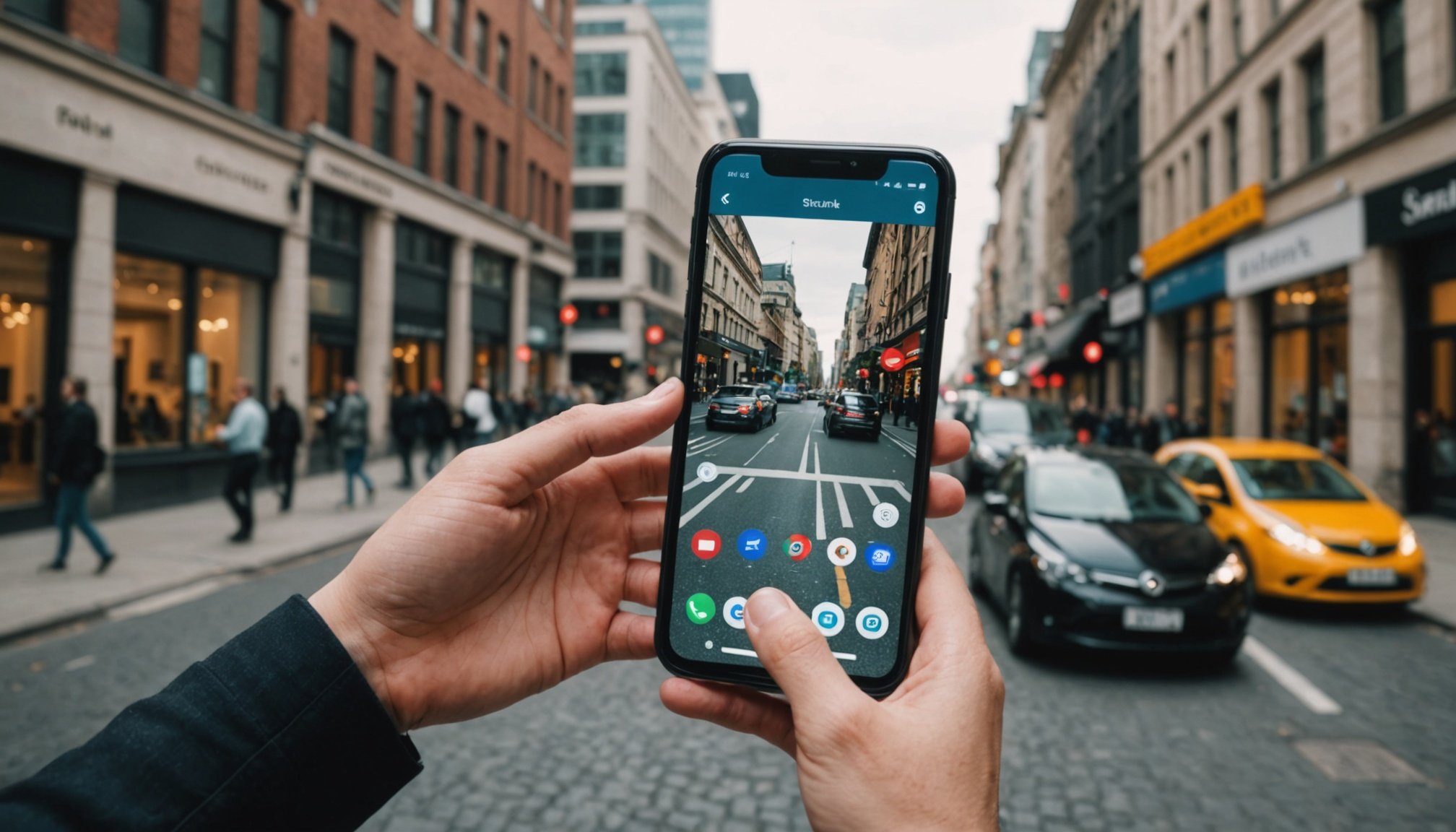Understanding Augmented Reality on Smartphones
Augmented Reality (AR) is a transformative technology that integrates digital information into the real world through smartphones. It enhances our perception by overlaying graphics, sounds, and other digital augmentations onto physical environments in real-time.
Smartphone AR primarily relies on two key components: hardware and software. The hardware aspect includes the smartphone’s camera, sensors, and processor, which are crucial for capturing and processing visual data. On the software side, AR applications interpret this data to superimpose digital content seamlessly onto the camera feed. This delicate interaction between hardware and software enables users to interact with digital elements that appear to co-exist with reality.
One common misconception is confusing AR with Virtual Reality (VR). While both are immersive technologies, their differences are stark. Virtual Reality creates a fully enclosed digital environment, disconnecting users from the real world, whereas Augmented Reality enhances the user’s real-world experience by adding digital elements to it. Think of VR as a digital escapism, and AR as digital enhancement.
Understanding these basics of Augmented Reality is essential for anyone looking to delve into the expanding world of AR as it continues to evolve and become more integrated into various facets of daily life through smartphone AR.
Have you seen this : Maximize Your Phone’s Power: The Definitive Handbook for Effortlessly Controlling Your Smart Coffee Maker
Selecting the Right Smartphone for AR
When exploring AR-compatible smartphones, understanding the hardware requirements is crucial for optimal performance. Essential specifications include robust processors, high-quality cameras, and advanced sensors. These features ensure smooth integration of digital and real-world elements. Additionally, sufficient RAM and storage are necessary to accommodate resource-intensive AR applications.
Selecting a high-caliber device from top-rated manufacturers can significantly enhance the AR experience. Models like Apple’s latest iPhones, Samsung’s Galaxy series, and Google’s Pixel range represent the pinnacle of AR capabilities. Each brand offers unique benefits; for instance, Apple’s ARKit and Google’s ARCore provide comprehensive support for seamless application performance.
To ensure longevity, consider devices with specifications that can adapt to upcoming AR technologies. This “future-proofing” could involve choosing phones that incorporate cutting-edge innovations like advanced 5G connectivity and enhanced AI processing.
When investing in an AR-enabled device, weigh your specific needs and preferred applications. This assessment helps balance immediate usage with future technological trends. Such informed decisions can result in a seamless, innovative AR experience that enhances daily interactions. Never underestimate the power of a wisely chosen AR-compatible smartphone in transforming your digital experiences.
Essential Apps to Enhance AR Experience
Exploring the world of Augmented Reality has never been more exciting, thanks to the availability of robust applications designed to enrich your smartphone AR experience. Here’s a look at some top AR applications that stand out in gaming, entertainment, and education.
In gaming and entertainment, applications like Pokémon GO and Harry Potter: Wizards Unite leverage the technology’s power to create fully immersive experiences that transform your real-world surroundings into game environments. These games exemplify how AR basics turn mundane settings into fantastical landscapes.
Beyond entertainment, educational AR applications can significantly amplify learning. Apps like Google Lens or SkyView transform phones into portable educational tools, providing an interactive approach to acquiring knowledge. Whether identifying plants or exploring the night sky, these apps enhance the learning experience.
Productivity tools with AR functionalities also hold immense potential. For instance, IKEA Place allows users to visualise furniture in their homes before purchase, merging practicality with technology. Such applications illustrate the wide array of utilities AR offers beyond just fun and games.
By utilising these best AR apps, users can significantly augment their digital and real-world interactions, ensuring a dynamic and engaging smartphone experience.
Configuring Device Settings for Optimal AR Performance
To maximise your Augmented Reality (AR) experience on smartphones, fine-tuning device settings is essential. Begin by adjusting the camera settings, as clarity and precision directly impact AR functionality. High-resolution settings enable the camera to capture more detail, enhancing digital overlays.
Managing app permissions is another crucial step. Ensure AR apps have access to the camera, location, and motion sensors to operate effectively. These components enable the AR app to accurately map and interact with the real world. Without the necessary permissions, your AR experience may suffer.
Battery conservation is paramount, given that AR applications can be power-intensive. Enabled by efficient background processing, maintain battery life by closing unused apps and reducing brightness while engaged in AR activities. Another tip is enabling battery saver mode, which moderates power consumption without drastically affecting performance.
Taking these steps will significantly boost AR device optimization, ensuring you get the most out of your Smartphone AR experiences. Implementing efficient settings to improve performance affects not only functionality but also the longevity of your smartphone. Enjoy seamless and enriched AR interactions by ensuring your device is performance-ready for all AR applications.
Creating Augmented Reality Experiences
Creating your own Augmented Reality (AR) experiences can seem daunting, but with the right tools, it’s accessible for all. Begin by exploring DIY AR development apps, which offer user-friendly platforms for crafting personal, interactive content. Platforms such as Blippar and ZapWorks allow enthusiasts to experiment with and build unique AR projects without extensive coding knowledge.
Developing AR content involves understanding the basics of AR, like how objects and scenes interrelate in a digital space overlaid on reality. These platforms provide templates and tutorials to guide beginners throughout the process, ensuring a strong groundwork for those wishing to learn about AR content creation.
For those eager to delve deeper into professional AR development, partnering with codes and scripts via software like Unity or ARKit offers more sophisticated options. These development environments provide extensive libraries and frameworks, enabling ambitious creators to develop more complex, immersive AR applications.
Interactive AR projects can range from simple 3D models to innovative educational tools, with creativity being the only limit. Personal projects allow individuals to experiment with AR entertainment, educational applications, and novel utility facets. Embrace the evolution of smartphone AR technology and bring your digital ideas to life!
Overcoming Common Challenges in Using AR
Augmented Reality (AR) offers exciting possibilities but comes with challenges that can affect the experience. A common issue is performance lag, often caused by insufficient hardware capabilities or outdated software. Ensuring your smartphone’s specifications meet recommended hardware requirements can mitigate these delays.
Another frequent problem with Smartphone AR is tracking errors, where digital content fails to align with the physical environment. Solutions include using AR in well-lit spaces with distinct textures. This enhances the device’s ability to discern and track surfaces accurately, leveraging its camera and sensors for better performance.
Environmental factors can also impact AR experiences. For optimal results, ensure surroundings are clutter-free since excessive objects can confuse tracking systems. Adjust lighting conditions to eliminate harsh shadows or glares that might skew the camera’s interpretations.
To improve interactions, users should regularly update AR applications and operating systems. Developers continually release patches to refine their software, addressing known bugs and enhancing AR experiences. Adopting best use practices—like calibrating sensors and ensuring permissions are correctly set—can also optimize performance.
Overcoming these challenges allows for smoother, more immersive AR interactions, unlocking the full potential of this innovative technology.
Real-Life Applications of Augmented Reality
Augmented Reality (AR) has moved beyond the realm of entertainment to offer practical uses in daily life. One sector experiencing substantial gains is education and training. Schools and universities employ AR applications to provide immersive learning experiences. By overlaying historical events or complex scientific models over real-world settings, AR enhances comprehension and engagement.
In home design and interior planning, AR facilitates visualisation. AR-enabled apps allow users to see furniture and decor within their spaces before purchase, ensuring satisfaction without commitment. This technology empowers users to make informed decisions, minimizing return hassles.
Retail industries are also leveraging AR to revolutionise shopping experiences. Try-before-you-buy features give customers a virtual fitting room where they can explore clothing, accessories, and even makeup virtually. This interactive experience not only boosts customer engagement but drives sales by enhancing buyer confidence.
The versatility of AR is evident as it permeates various aspects of everyday activities. From shopping to education, these AR applications illustrate how virtual elements can significantly enhance real-world experiences. The adoption of AR is setting new standards for productivity and satisfaction, transforming conventional interactions into innovative digital experiences. Augmented Reality is undoubtedly a game-changer in how society navigates and enriches its surroundings.
Future Trends in Augmented Reality Technology
Exploring Augmented Reality (AR) trends reveals exciting future developments that will redefine smartphone AR technology. Emerging AR technologies highlight possibilities of integration with Artificial Intelligence (AI) and the Internet of Things (IoT), enhancing interactivity and functionality. Imagine smart devices leveraging AR to recognise gestures or predict user needs based on personal data.
AR trends show promising advancements in hardware, with manufacturers developing enhanced devices incorporating sophisticated sensors and cameras, improving accuracy in virtual overlays. The evolution of augmented reality thus ensures seamless digital interaction, enhancing device efficiency and enriching user engagement across various interfaces.
The future of AR is intertwined with collaborative innovations, where industries combine AR with existing technologies to create revolutionary applications. From smart cities integrating AR for interactive navigation systems to healthcare utilising AR for improved diagnostics, the possibilities are boundless.
Looking ahead, predictions envisage a future where AR technology will not merely complement daily activities but redefine user experiences. As augmented reality converges with AI and IoT, envision personalised, adaptive environments that transform how individuals engage with technology, promoting a more interconnected, immersive lifestyle. Embrace these AR trends as they unfold into fascinating digital experiences.











